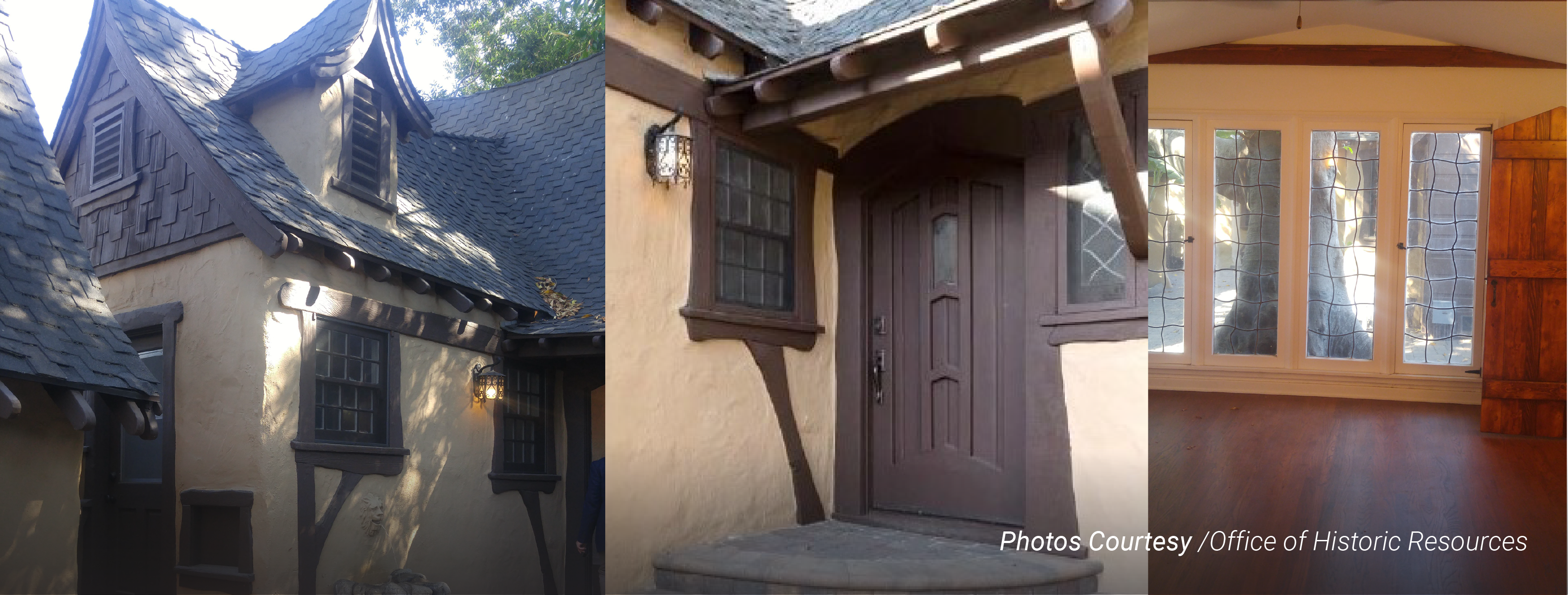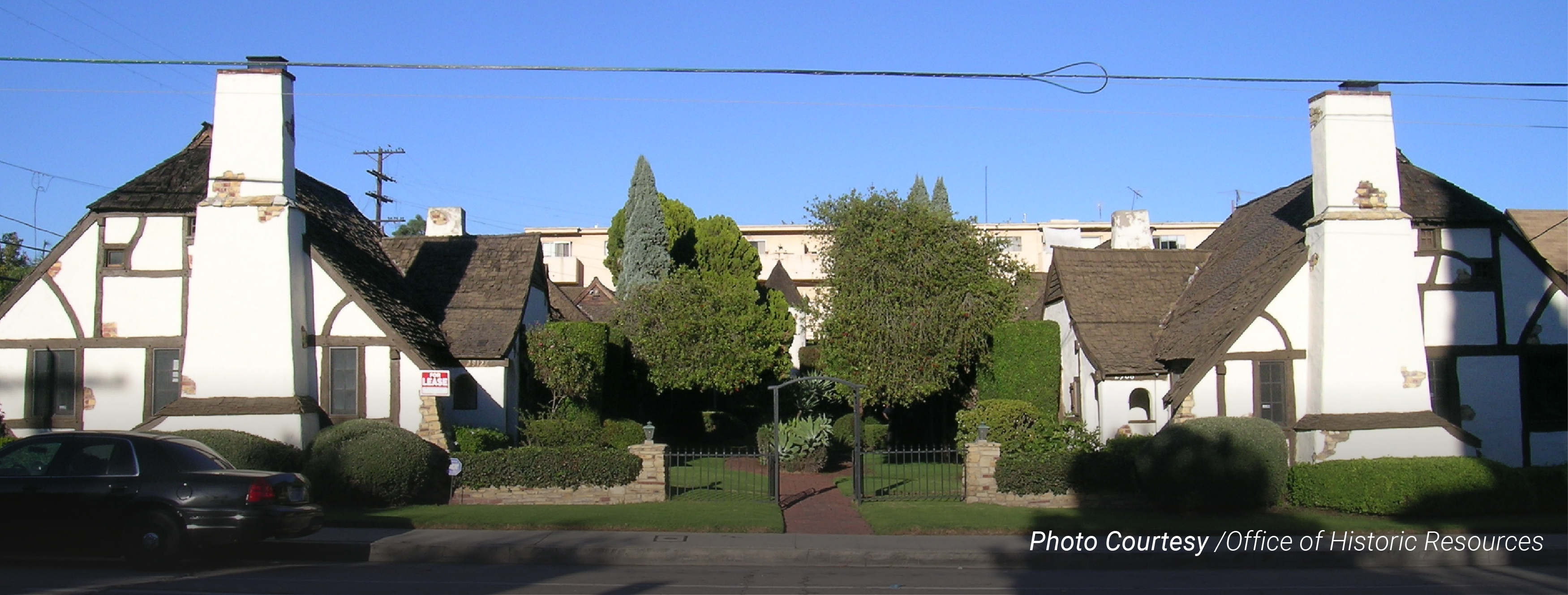
-
Category:
- #OurLA
- Communities
#OurLA
At a time when Angelenos are significantly confined to our homes, LA City Planning’s Office of Historic Resources has created a series of blogs called #OurLA to keep us connected to one another and to the places and neighborhoods that make Los Angeles special. This series highlights lesser-known historic buildings and historic places across the city – including places that help build community and connection. We’ll also be offering links to where you can learn more about related historic places and themes that have helped to define Los Angeles.
In a city known for its creative and fanciful architecture, one of the most engaging Los Angeles residential design traditions is the “Storybook” style, evoking the fantasy architecture of fairy tales or by-gone European villages.

The Storybook style was particularly popular in Hollywood, where motion picture set designers sometimes moonlighted as architects. It represented a whimsical and stylized variation on Tudor Revival architecture, which had been loosely based on a variety of Medieval English building traditions. Storybook residences typically feature exaggerated handmade details meant to suggest great age, including roofs with rolled eaves to resemble thatching, tall and narrow windows, and exterior walls accented with wood half-timbering.

Though the Storybook style was most frequently used for single-family homes, it was also applied in selected locations to multi-family housing – perhaps nowhere to better effect than at the Village Court in Hollywood, constructed in 1923.
Village Court came about through a collaboration that – somewhat unusually in the worlds of 1920s real estate and design – significantly involved two women. The property owner was Louise Casler, a newcomer to Los Angeles who purchased the Formosa Avenue lot in 1922 with funds she had inherited following the death of her first husband, a Chicago manufacturer. Casler chose to hire Arthur Zwebell, an “architectural designer” who was not a licensed architect. Zwebell nevertheless soon became recognized, along with his wife, interior designer Nina Zwebell, as pioneers in the development of courtyard housing in Los Angeles.

Nina Zwebell established an interior design firm as well as a furniture factory, where she designed and produced period furniture throughout the 1920s. Nina designed the interiors for all of the couple’s apartment courts, and for many properties she created accompanying furniture. During the 1920s, the Zwebells would become most known for their elaborate and expansive courtyard apartment buildings in the Spanish Colonial Revival and Mediterranean Revival styles, including the Andalusia, El Cabrillo, and Casa Laguna.
Village Court is the oldest extant example of a multi-family residence associated with the Zwebells. It exhibits all of the features of Storybook housing in a four-unit multi-family complex, consisting of two detached bungalows and one duplex bungalow, with adjacent garages. The primary façade of each residence is asymmetrically composed; entrances are accessed via shallow stone steps, some of which are surrounded by low brick walls. The court includes some residences featuring projecting bays or round turrets topped with conical roofs. Village Court was designated as City Historic-Cultural Monument #1153.
Like the Zwebells’ later apartment courts, Village Court provides an exceptional residential environment for multi-family living, with architectural detail typically reserved for single-family homes, and a courtyard design that fosters a sense of community.
For a deeper dive at home:
In 2018, the Office of Historic Resources completed the Multi-Family Residential Development Historic Context Statement, providing a framework for the identification of significant multi-family residences across the city, including bungalow courts.
HistoricPlacesLA, the citywide inventory of historic resources, includes other significant examples of the bungalow court, and Storybook bungalows specifically, identified through SurveyLA, the Los Angeles Historic Resources Survey, including this Los Feliz bungalow court associated with Disney animators who worked on Snow White and the Seven Dwarfs.